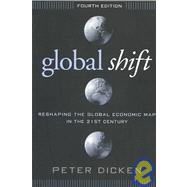Now in a fully revised and expanded fourth edition, this comprehensive work is the definitive text on globalization. Students gain a solid understanding of the economic, political, and technological processes that are creating global shifts in economic activity and affecting local communities in highly uneven ways. Examined are the actions and interactions of two major groups of actors--transnational corporations and states--set within a volatile technological environment. Of special utility are detailed case studies of key global industries and more than 200 fully updated figures and tables. The fourth edition has been extensively rewritten to reflect the latest empirical and theoretical developments, and several entirely new chapters are included.
New in the Fourth Edition
*Increased attention to the globalization and anti-globalization debates
*A new case study on the distribution industries: logistics, retailing, and e-commerce
*Expanded coverage of developmental, environmental, and governance issues
*Definitions and cross-referencing of key terms
*Many additional maps, graphs, tables, and diagrams
New in the Fourth Edition
*Increased attention to the globalization and anti-globalization debates
*A new case study on the distribution industries: logistics, retailing, and e-commerce
*Expanded coverage of developmental, environmental, and governance issues
*Definitions and cross-referencing of key terms
*Many additional maps, graphs, tables, and diagrams








